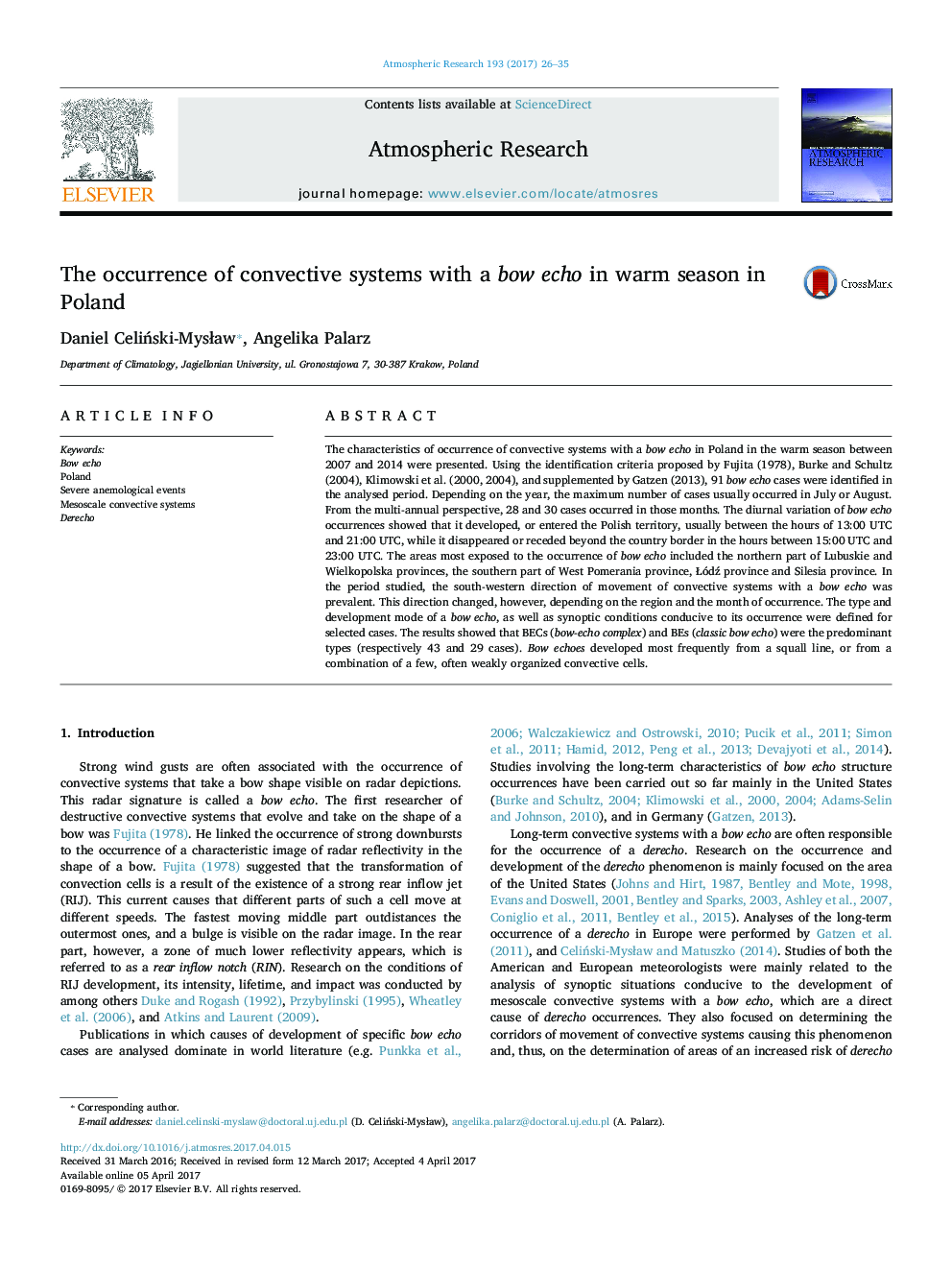| Article ID | Journal | Published Year | Pages | File Type |
|---|---|---|---|---|
| 5753634 | Atmospheric Research | 2017 | 10 Pages |
Abstract
The characteristics of occurrence of convective systems with a bow echo in Poland in the warm season between 2007 and 2014 were presented. Using the identification criteria proposed by Fujita (1978), Burke and Schultz (2004), Klimowski et al. (2000, 2004), and supplemented by Gatzen (2013), 91 bow echo cases were identified in the analysed period. Depending on the year, the maximum number of cases usually occurred in July or August. From the multi-annual perspective, 28 and 30 cases occurred in those months. The diurnal variation of bow echo occurrences showed that it developed, or entered the Polish territory, usually between the hours of 13:00 UTC and 21:00 UTC, while it disappeared or receded beyond the country border in the hours between 15:00 UTC and 23:00 UTC. The areas most exposed to the occurrence of bow echo included the northern part of Lubuskie and Wielkopolska provinces, the southern part of West Pomerania province, Åódź province and Silesia province. In the period studied, the south-western direction of movement of convective systems with a bow echo was prevalent. This direction changed, however, depending on the region and the month of occurrence. The type and development mode of a bow echo, as well as synoptic conditions conducive to its occurrence were defined for selected cases. The results showed that BECs (bow-echo complex) and BEs (classic bow echo) were the predominant types (respectively 43 and 29 cases). Bow echoes developed most frequently from a squall line, or from a combination of a few, often weakly organized convective cells.
Related Topics
Physical Sciences and Engineering
Earth and Planetary Sciences
Atmospheric Science
Authors
Daniel CeliÅski-MysÅaw, Angelika Palarz,
